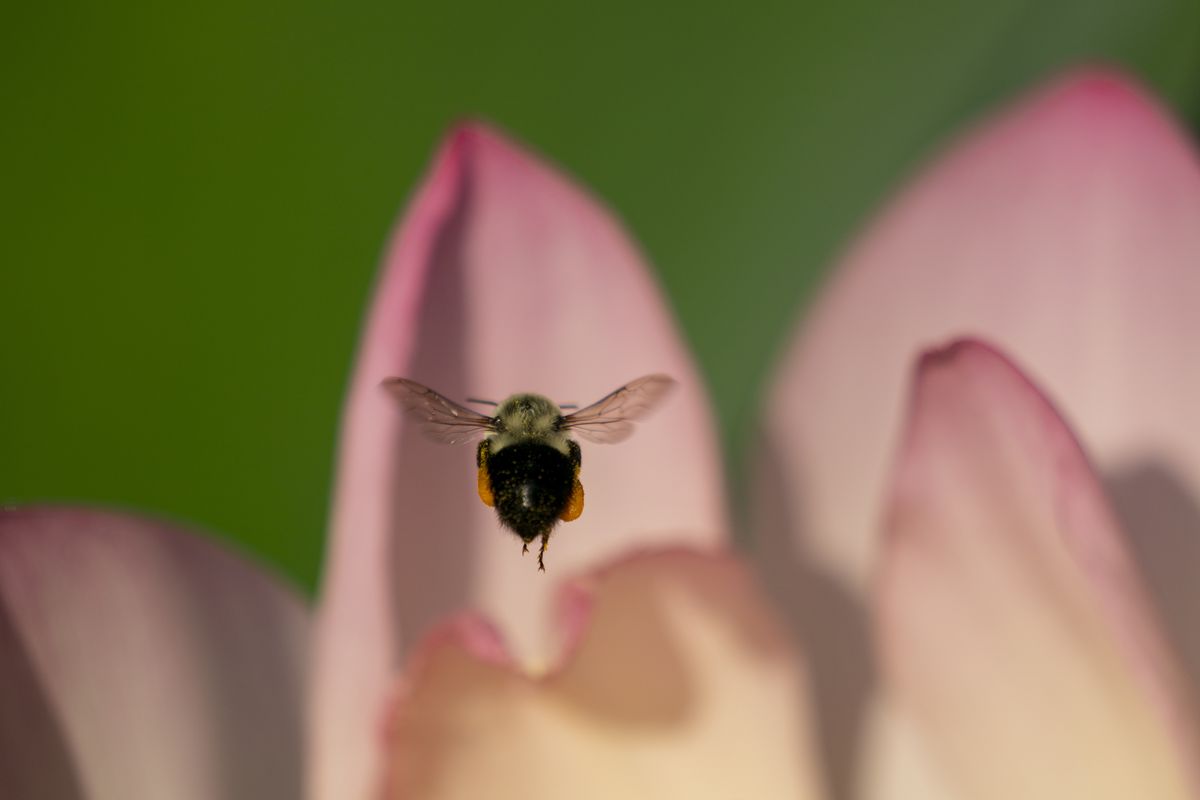Ask Dr. Universe: What are bees’ wings made of?

Washington State University
What are bees’ wings made of? – Natalia, 13, Kennewick
Dear Natalia,
Bee wings might be small, but they are really strong. I learned all about bee wings from my friend Melanie Kirby, a honey bee researcher at Washington State University.
Kirby said you can think about bee wings as if they were a kite. If you make a kite out of thin tissue, it might rip. But if you make it out of a strong plastic film, it will be stronger.
Bee wings are made of a material called chitin (KITE-IN) and it’s a lot like keratin, the material that makes up your fingernails. Chitin is what makes up the wings on each side of the bee’s body.
There are the forewings, which are longer, and the hindwings, which are shorter. When a bee isn’t flying, the hindwings often get tucked in behind the forewings.
Kirby told me that chitin covers the bee’s entire body and is what makes up the exoskeleton. While you have a skeleton under your skin, bees wear their skeletons on the outside of their bodies.
Bee wings are very thin and transparent, which means you can see through them, a bit like clear glass. But the strength of the material can help a bee carry a lot of nectar. In fact, a bee can carry a load of nectar that is almost equal to its body weight.
I found out chitin isn’t the only thing that makes up bees’ wings. There also are veins filled with hemolymph, or insect blood. And there are air tubes and nerves, too. These parts add strength and stability to the wings, Kirby said.
The veins are kind of like the cross sections of the sticks in a kite. Different types of bees have different vein patterns on their wings.
“Scientists can identify bees by looking at the wings close up under a microscope. And like a kite, it has a cross section of sticks, or the veins, which reinforce the wing,” Kirby said.
The wings are connected to muscles in the middle section of the bee, or its thorax. Small barbs called hamuli can connect the forewing and hindwing together. When the hamuli are connected, the wings come together to act like one big kite. This helps the bees glide as they fly.
When the hamuli are separated, the wings are like little rotary motors moving around in a circle like a propeller. This helps the bees get lift and steer themselves in different directions as they fly.
Bees’ wings are the last thing to form before they emerge as adults (bees also develop through metamorphosis similar to butterflies). Their wings will carry the bees through their entire lifetime. Researchers estimate that bees get about 500 miles on their wings before they start to tear and wear out.
During their lifetime, bees will fly from flower to flower. They move tiny grains of pollen around to help plants grow things like nuts, fruits and vegetables. It’s called pollination. The next time you hear the buzz of a bee’s beating wings, remember how important they are to our world and how they help us have food to eat.
Sincerely,
Dr. Universe
Ask Dr. Universe is a project from Washington State University. Submit a question at askdruniverse.wsu.edu/ask.